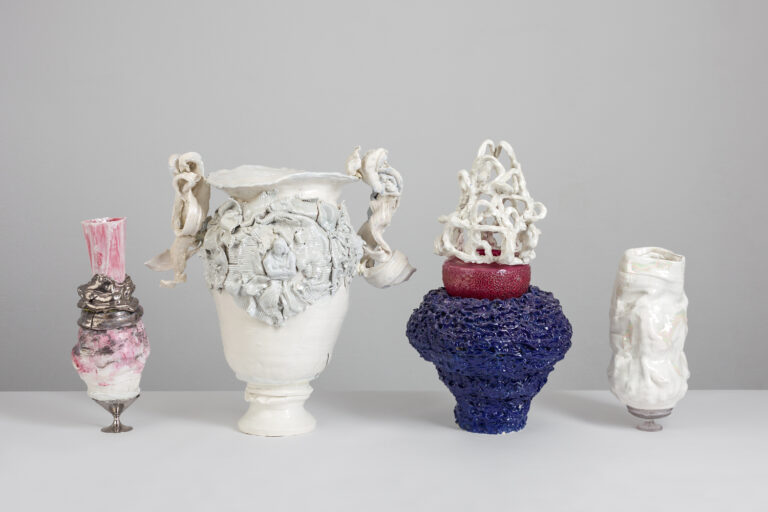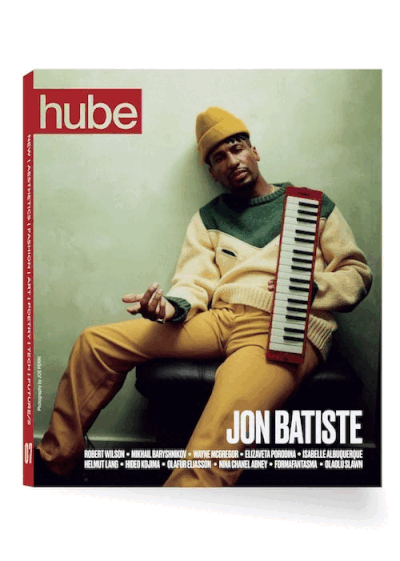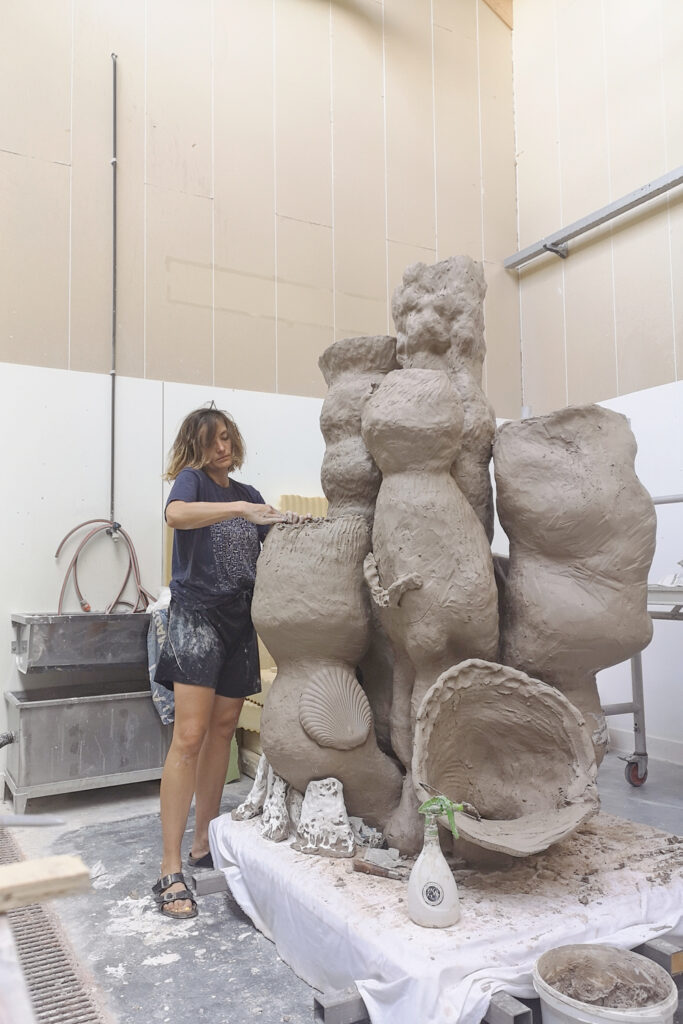
Photography courtesy of SARAH PSCHORN
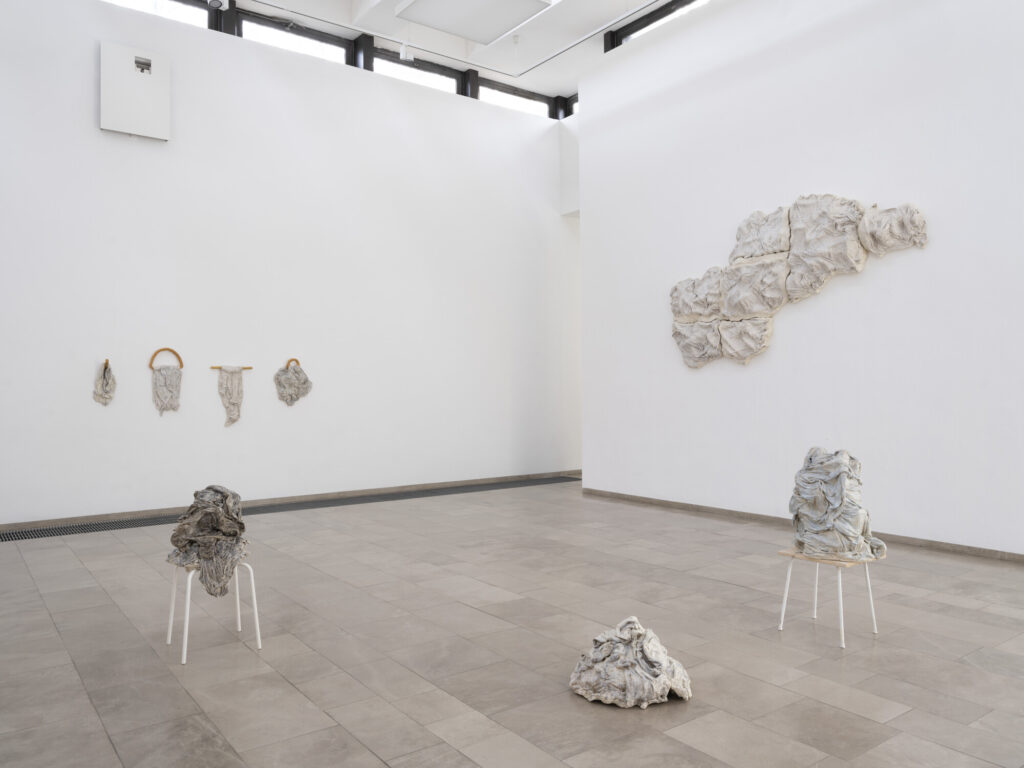
Photography by RÜDIGER LUBRICHT
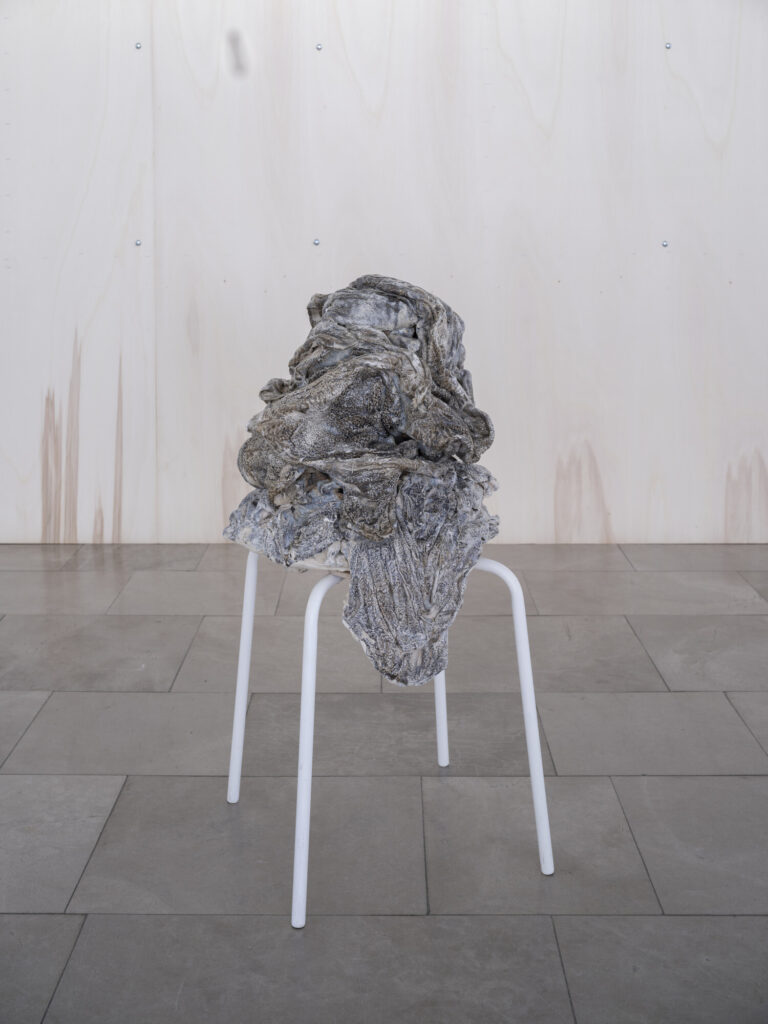
Towelsculpture 7, 2023
Photography by RÜDIGER LUBRICHT
What does it mean to capture a fleeting moment and transform it into eternity? How does clay – earthy, tactile, stubborn – become a vessel for dreams of paradise and the tension of gravity? Sarah Pschorn invites us into her world, where Baroque exuberance meets playful experimentation, and each sculpture tells a story of love, patience, and the beauty of the unexpected.
hube: Your work often explores the tension between joy and melancholia. How do your surroundings in Leipzig and your upbringing in Dresden influence this interplay in your art?
Sarah Pschorn: Joy and melancholy are two emotions that may seem contradictory at first, yet they can also be experienced simultaneously. This duality is closely tied to the Baroque period, which was characterised by a strong fascination with depicting psychological states and an intense focus on the inner lives of individuals.
I grew up in Dresden, surrounded by Baroque architecture. I vividly remember being captivated by the Baroque sculptures and reliefs, particularly their facial expressions and gestures – they appeared so exaggerated, so extroverted. At times, I even felt a little embarrassed by the faces twisted in pain or pleasure. As a child, I couldn’t imagine that these sculptures had been created by adults, who always seemed so intent on appearing serious and hiding their emotions.
h: Growing up surrounded by Baroque architecture has clearly impacted your aesthetic. Could you describe a moment when this influence directly shaped one of your pieces?
SP: As a child, I didn’t think much of the Baroque architecture that surrounded me – it often felt overwhelming, even excessive. However, during an art history class in art school, my perspective shifted as I began to understand the vision of Baroque artists: their ambition to create immersive experiences that seamlessly blended sculpture, painting, and architecture into a cohesive whole. Their mastery of illusion and their ability to evoke deep emotional responses profoundly inspired me.
This realisation liberated my creative thinking, as I felt encouraged to lose myself in forms and decorations without restraint. It directly influenced my first series of ceremonial vases in 2012, titled I Love Barock, a tribute to Johann Joachim Kändler, the pioneering sculptor of the Meissen porcelain manufactory. European porcelain was first discovered during the Baroque period, and I was particularly captivated by the early works, which were still entirely white at the time.
h: You’ve been working with clay since you were five. What is it about this material that continues to captivate you, and how has your relationship with it evolved over time?
SP: Okay, here comes a little love letter! Clay is simply there. You can find it everywhere, dig it up, and mould it. The approach feels so natural and simple. What fascinates me most is that I can preserve a quick idea – a spontaneous sculptural gesture – forever through the firing process. It creates this strange coherence between brief moments and eternity. I also love that my influence on the finished sculpture is limited by the firing process. The chemical reactions, the statics, and the shrinkage transform the piece immensely. Working with clay is constantly about letting go of your own expectations and responding to the unexpected.
Since I’ve been working with clay from a young age, almost every creative idea in my head takes shape through the lens of this material – I think in clay, so to speak I can’t say for sure whether the material properties align with my nature or whether my nature has adapted to the material. Two simple examples: I wouldn’t normally describe myself as a patient person, but working with clay requires patience, so I’ve learned to be patient. I don’t usually care much for chemistry, but creating ceramic glazes depends on it, so I’ve learned to engage with it.
Sometimes, it feels like I’m married to the material. Occasionally, I get a little annoyed or bored by its behaviour, but in the end, I always feel a deep connection and love.
